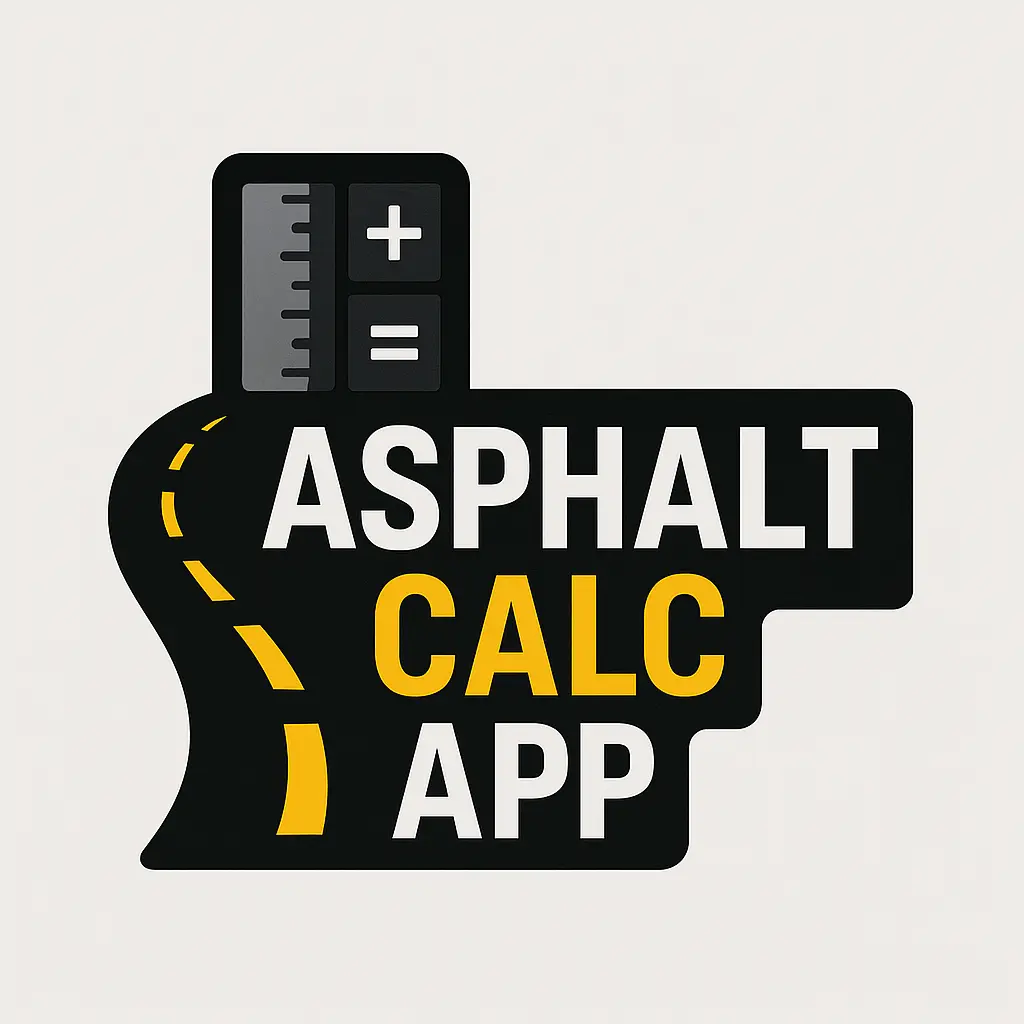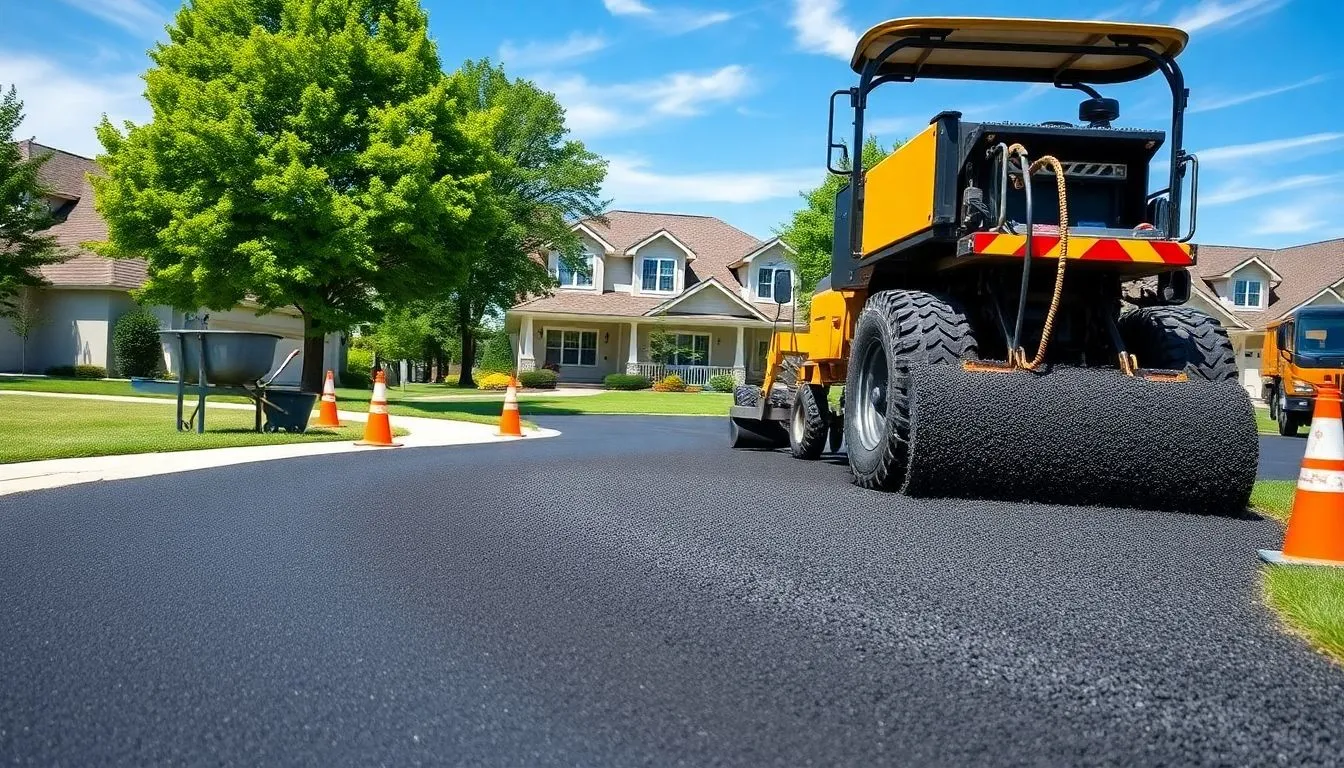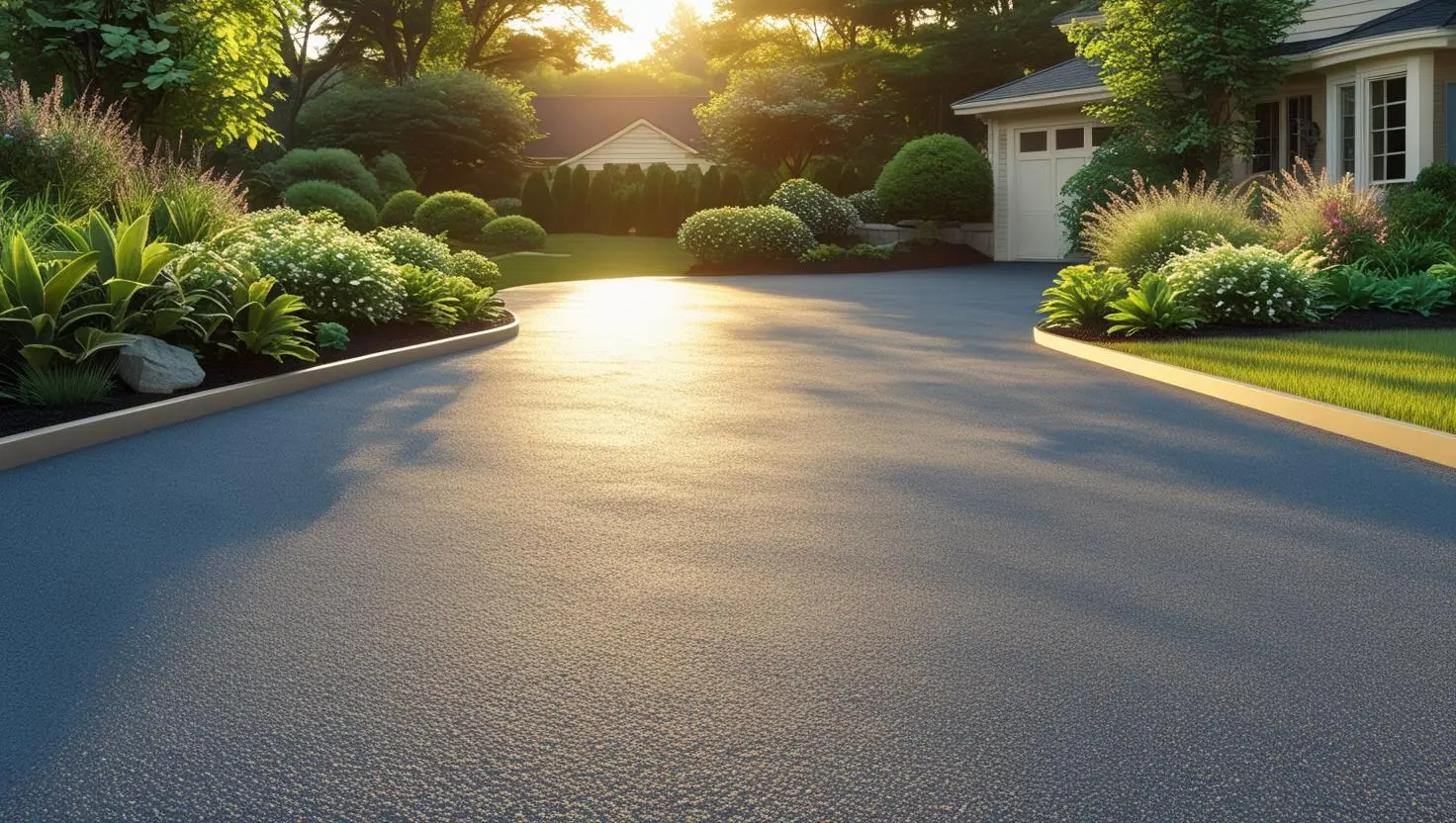A driveway is more than just a place to park your automobile. It’s one of the first things people notice when they come. If it’s cracked, faded, or uneven, it can give a bad first impression. Over time, environmental conditions and daily use can wear it down. Resurfacing your driveway is an excellent method to improve both the appearance and functionality of your property. It can save costs, enhance property value, and make your driveway safer to walk and drive on.
Understanding Driveway Resurfacing: What It Is and Why It Matters
Definition and Overview of Driveway Resurfacing
Resurfacing entails laying a fresh layer of material over your existing driveway. This process covers cracks, stains, and surface damage. It’s like giving your driveway a fresh coat of paint—only it’s a durable new surface that lasts years. Unlike sealing or full replacement, resurfacing keeps most of your existing foundation intact. It’s a quick fix that transforms the look and strength of your driveway.
Common Causes of Driveway Deterioration
Driveways don’t last forever. Weather plays a big role—freezing and thawing cause cracks, while heat can make material fade and soften. Heavy cars cause stress on the surface, resulting in cracks and depressions. Chemical spills, such as oil or de-icing chemicals, can eat away at the substance. A well-maintained asphalt driveway typically lasts 15-20 years, but negligence can limit its life. After around ten years, most driveways begin to exhibit signs of degradation.
Benefits of Resurfacing vs. Full Replacement
Resurfacing is generally less expensive and faster than replacing an entire driveway. It usually takes just a few days, causing less disruption to your daily routine. Plus, it preserves your existing driveway structure, which can save money. While full replacement may be necessary for serious damage, resurfacing offers a perfect balance of cost, quick turnaround, and aesthetic upgrade.
Types of Driveway Resurfacing Materials and Techniques
Asphalt Resurfacing
Asphalt is a popular choice for resurfacing because it’s affordable and durable. It’s best suited when your existing driveway is mostly intact but needs a facelift. The method consists of cleaning the old surface, fixing cracks, and putting a new asphalt layer. This option resists weather and heavy traffic well, making it ideal for busy driveways.
Concrete Resurfacing
Concrete overlays are thin coatings or stamps applied over existing concrete. They can incorporate decorative patterns or textures, giving your driveway a custom look. Concrete is praised for its strength and long life, especially in harsher climates. A professional can apply a thin layer that hides imperfections while adding design options.
Polymer-Modified Resurfacing Products
These are advanced mixes that include polymers for extra bonding. They stick better, resist cracking longer, and are more flexible against temperature shifts. Some products blur the line between repair and enhancement by offering a seamless, textured look. They are especially useful in locations prone to harsh weather.
Surface Preparation and Application Methods
Proper preparation is essential before applying any type of resurfacing material. This involves properly cleaning the surface, patching holes, and repairing cracks. Adequate drainage must be provided so that water does not pool. Spraying, troweling, and stamping are common application techniques. The correct approach is determined by the condition of your driveway and the material used.
Step-by-Step Guide to Driveway Resurfacing
Assessing Your Driveway’s Condition
Begin with a visual assessment. Look for huge cracks, potholes, or sinking surfaces. If the injury is extensive or severe, it is preferable to seek professional help. Otherwise, tiny cracks and surface wear can frequently be repaired with do-it-yourself techniques.
Preparing the Surface
Clear clusters of dirt, leaves, and debris. Fill tiny fractures using concrete or asphalt fillers. Address drainage issues to prevent future damage. A stable, clean base helps the new layer bond properly and last longer.
Choosing the Right Resurfacing Material
Think about your climate, driveway traffic, and budget. Asphalt may suit a busy area, while decorative concrete fits if you want style. Consulting professionals can help identify the best options for your needs, ensuring durability and aesthetics.
Application Process
Resurfacing usually follows these steps:
- Clean and prime the surface
- Fill or repair cracks
- Apply the new coating with a spray or trowel
- Allow it to cure for at least 24 hours before usage.
The timing varies, but most tasks are done within a few days.
Post-Resurfacing Maintenance
Keep your driveway clean by sweeping regularly. Seal it every 2-3 years to protect it from stains and the elements. Repair any new cracks as soon as possible to avoid larger problems. Proper maintenance will increase the life of your resurfaced driveway.
Cost Factors and Budgeting for Driveway Resurfacing
Typical Cost Range
On average, resurfacing costs between $2,500 and $7,000. The exact price depends on the size of your driveway and the chosen materials.
Factors Influencing Cost
- Material type
- Surface condition
- Driveway size
- Local labor rates
- Additional repairs needed
Cost-Saving Tips
Resurface during off-peak seasons for better rates. Combine repairs with upgrades like minor landscaping or drainage fixes. Getting numerous quotations from contractors guarantees that you are paying a reasonable price.
Hiring Professionals vs. DIY Resurfacing
Advantages of Professional Resurfacing
Experts bring experience and the right tools, ensuring an even, long-lasting finish. They frequently provide guarantees and can advise on the best materials.s. Professional work can save money by avoiding costly mistakes.
Risks of DIY Resurfacing
Turning a DIY project into a disaster is common. Poor prep or incorrect application leads to uneven surfaces, cracking, or early failure. It’s tempting to save money, but the last thing you want is to do all the work again soon.
How to Choose a Reliable Contractor
Seek verified credentials, licenses, and insurance. Check online reviews or ask for references. Look at photos of past projects. Get at least three quotes, and don’t hesitate to ask detailed questions.
Environmental and Safety Considerations
Eco-Friendly Resurfacing Options
Look for products made with recycled materials or low-VOC formulas. These options reduce environmental impact and improve air quality during application.
Safety Tips During Resurfacing
Wear protective gear—gloves, masks, and goggles. When working with chemical materials, always ensure to use sufficient ventilation. Keep dogs and children away throughout the procedure. Work in proper weather conditions to avoid problems caused by rain or severe heat.
Real-World Examples and Case Studies
Several successful projects showcase the power of resurfacing. For example, a home in California transformed its tired concrete driveway into a stamped, decorative surface, increasing curb appeal and value. Before-and-after photos often show a dramatic change. Customer feedback highlights how resurfacing boosted safety and made their property look fresh at a fraction of full replacement costs.
Take the first step today—inspect your driveway, get estimates, and consult with trusted local professionals. And for all your asphalt-related calculations, don’t forget to use our free asphalt calculator!
Conclusion
Resurfacing your driveway is an effective way to boost your home’s appeal and last longer against wear and tear. It’s a process that, when done right, offers both aesthetic benefits and cost savings. Picking the right materials and trusted professionals means your driveway can look great and perform well for years. Don’t wait—evaluate your driveway today and consider expert resurfacing to enhance your property’s safety and value.
FAQs
How long does driveway resurfacing last?
On average, resurfaced driveways last 7 to 15 years, depending on the material and maintenance.
Can I resurface a driveway myself?
Yes, but it requires prep work, proper tools, and material knowledge. Ideal for experienced DIYers.
How often should I resurface my driveway?
Every 8–15 years, depending on surface wear and climate conditions.
Is resurfacing better than sealcoating?
Yes. Sealcoating adds a protective layer, but resurfacing adds new material to restore surface strength.
Will resurfacing fix all cracks?
No. It’s suitable for surface cracks, not structural damage or deep potholes.


